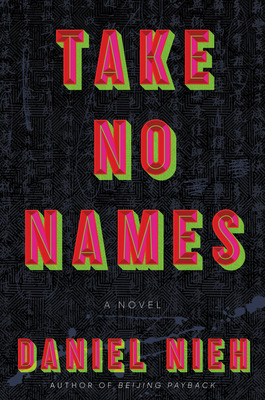#the earthquake that will devastate the pacific northwest
Explore tagged Tumblr posts
Text
The first sign that the Cascadia earthquake has begun will be a compressional wave, radiating outward from the fault line. Compressional waves are fast-moving, high-frequency waves, audible to dogs and certain other animals but experienced by humans only as a sudden jolt. They are not very harmful, but they are potentially very useful, since they travel fast enough to be detected by sensors thirty to ninety seconds ahead of other seismic waves. That is enough time for earthquake early-warning systems, such as those in use throughout Japan, to automatically perform a variety of lifesaving functions: shutting down railways and power plants, opening elevators and firehouse doors, alerting hospitals to halt surgeries, and triggering alarms so that the general public can take cover. The Pacific Northwest has no early-warning system. When the Cascadia earthquake begins, there will be, instead, a cacophony of barking dogs and a long, suspended, what-was-that moment before the surface waves arrive. Surface waves are slower, lower-frequency waves that move the ground both up and down and side to side: the shaking, starting in earnest.
Soon after that shaking begins, the electrical grid will fail, likely everywhere west of the Cascades and possibly well beyond. If it happens at night, the ensuing catastrophe will unfold in darkness. In theory, those who are at home when it hits should be safest; it is easy and relatively inexpensive to seismically safeguard a private dwelling. But, lulled into nonchalance by their seemingly benign environment, most people in the Pacific Northwest have not done so. That nonchalance will shatter instantly. So will everything made of glass. Anything indoors and unsecured will lurch across the floor or come crashing down: bookshelves, lamps, computers, cannisters of flour in the pantry. Refrigerators will walk out of kitchens, unplugging themselves and toppling over. Water heaters will fall and smash interior gas lines. Houses that are not bolted to their foundations will slide off—or, rather, they will stay put, obeying inertia, while the foundations, together with the rest of the Northwest, jolt westward. Unmoored on the undulating ground, the homes will begin to collapse.
Across the region, other, larger structures will also start to fail. Until 1974, the state of Oregon had no seismic code, and few places in the Pacific Northwest had one appropriate to a magnitude-9.0 earthquake until 1994. The vast majority of buildings in the region were constructed before then. Ian Madin, who directs the Oregon Department of Geology and Mineral Industries (DOGAMI), estimates that seventy-five per cent of all structures in the state are not designed to withstand a major Cascadia quake. FEMA calculates that, across the region, something on the order of a million buildings—more than three thousand of them schools—will collapse or be compromised in the earthquake. So will half of all highway bridges, fifteen of the seventeen bridges spanning Portland’s two rivers, and two-thirds of railways and airports; also, one-third of all fire stations, half of all police stations, and two-thirds of all hospitals.
"The Really Big One" by Kathryn Schulz, 2015.
#the really big one#the earthquake that will devastate the pacific northwest#kathryn schulz#saint posts#hot shit#listen this article is RLY good
1 note
·
View note
Text
1. New Jersey Governor Declares State a 'Safe Haven' for Gender-Affirming Care

New Jersey’s Democratic governor has a message for the LGBTQ+ community. He issued an executive order on Tuesday indicating that, unlike in some Republican-controlled states, New Jersey is open and welcoming to everybody regardless of sexual orientation or gender identity. In addition, he says New Jersey is a “safe haven” for those seeking gender-affirming care.
2. Watch Ocean Cleanup remove the 200,000th kilogram of plastic from the Pacific Ocean
youtube
3. Finland becomes 31st member of NATO, doubling the alliance's border with Russia

Finland has become the 31st member of the Nato security alliance, doubling the length of member states' borders with Russia.The Finnish foreign minister handed the accession document to the US secretary of state who declared Finland a member.
Then in bright sunshine in front of Nato's gleaming new headquarters, Finland's white-and-blue flag joined a circle of 30 other flags.Finland's accession is a setback for Russia's Vladimir Putin. He had repeatedly complained of Nato's expansion before his full-scale invasion of Ukraine.
4. Captive orca Lolita set for release into 'home waters' after 50 years at Miami Seaquarium

The killer whale known as Lolita appears one step closer to returning to its natural habitat of the Pacific Northwest, after performing at a Miami tourist attraction for decades. It was taken from the ocean in 1970. But after a long-running dispute over where Lolita belongs, officials from various parties announced Thursday a "binding agreement" to take Lolita -- also known as Tokitae or Toki -- to its "home waters."
"Lolita will receive the highest quality care as the team works to make relocation possible in the next 18 to 24 months," Miami Seaquarium said in a statement Thursday.
5. Nature prescriptions shown to reduce blood pressure, depression, anxiety, and loneliness

A new study published in The Lancet Planetary Health suggests that nature prescriptions, which recommend spending time in nature, can provide both physical and mental health benefits. Patients who followed these prescriptions had reduced blood pressure, lower depression and anxiety scores, and a higher daily step count.
Research shows that contact with nature reduces harms, including those from poor air quality, heatwaves, and chronic stress, while encouraging healthy behaviours such as socialising and physical activity. This can help to prevent issues including loneliness, depression and cardiovascular disease.
6. Library Receives Flood Of Donations For Beloved Cat

The Ashville Free Library recently began a fundraiser to help pay for the aging cat’s veterinary care. After a story on Libby was published, donations to the library poured in. Director Kristina Benson called the community response overwhelming. As of Thursday, more than $2,900 had been raised.
Benson reported that Libby, the cat — who has recently been suffering from a cold — is now doing much better now that she has her medicine. Benson expects to keep the GoFundMe up until sometime next week.
7. Mother and baby reunited in Turkey nearly two months after earthquake

A mother has been reunited with her baby in southern Turkey after a DNA test confirmed it was her daughter, almost two months after the devastating earthquake, the country's family ministry said.
The three-and-a-half-month old "miracle baby", called Vetin, was pulled out of the rubble of a building in the province of Hatay more than five days after the Feb. 6 quake with no health problems.
----
That's it for this week :)
This newsletter will always be free. If you liked this post you can support me with a small kofi donation:
Buy me a coffee ❤️
Also don’t forget to reblog
765 notes
·
View notes
Text
trying to build a habit of saving journalism articles that have stuck with me (and remembering which ones I've read over the years). some I've read recently and in the past:
The Dead World of Blippi. Speaks for itself!
Footprints in the snow lead to an emotional rescue. On the danger of the natural world and the power of fragile human connection.
A Maddening Sound: Is the Hum a mysterious noise heard around the world, science, or mass delusion? On the Hum, my favorite phenomenon.
Who Is Still Inside the Metaverse? Searching for friends in Mark Zuckerberg’s deserted fantasyland. The strange between space of a (mostly) empty virtual world; I also recommend the Exploring Dead Games videos by Redlyne on Youtube for a similar vibe.
Is Time an Illusion? // The Cosmic Origins of Time's Arrow // The Paradox of Time: Why It Can't Stop, But Must. These three articles on the nature of time, if you'd like to hurt your brain.
The Really Big One. On the potential for the catastrophic consequences of an earthquake along the Pacific Northwest's Cascadia fault line.
The Uncounted. On the devastating civilian casualties of U. S. air strikes in Iraq.
The trauma floor: the secret lives of Facebook moderators in America. Self-explanatory; very good, but watch out - I think reading this a few years ago did most of the work of turning me into something of a misanthrope.
The Curse of Xanadu. On the first hypertext project that preceded the Internet.
A ‘Last Hope’ Experiment Finds Evidence for Unknown Particles // To Observe the Muon Is to Experience Hints of Immortality. Two articles about the experimental significance of the muon particle and the uncertainty of staring into the vast unknown.
25 notes
·
View notes
Text
living in the pacific northwest is so weird because you just randomly get hit with the panic that a history defining catastrophic earthquake can and will devastate your region at any given moment but you just have to get on with your day
#like yeah the city i live in has done p good in earthquake prep over the years but#NOTHING proofs a place from a magnitude 9 it will wreck havoc regardless you just have to try to minimize some of the harm#but there are so many buildings around here that were built before the earthquake code and they will literally just collapse#i truly do think the general public is woefully undereducated and underprepared for the Big One when (not if) it hits#like at the very least have an emergency plan and bag at home. at the very least#i’ve had conversations w my partner before about whether we want to live here long term#tho ofc it’s not that easy to just uproot our whole lives#idk like we love it here and i’m in love w the place and the nature and everything#but at the back of my mind is always the reality of living right smack in the cascadia subduction zone#queerasian.txt
5 notes
·
View notes
Text
Read if you want to have an anxiety induced nightmare teehee
0 notes
Text
Events 10.12 (before 1970)
539 BC – The army of Cyrus the Great of Persia takes Babylon, ending the Babylonian empire. (Julian calendar) 633 – Battle of Hatfield Chase: King Edwin of Northumbria is defeated and killed by an alliance under Penda of Mercia and Cadwallon of Gwynedd. 1279 – The Nichiren Sh��shū branch of Buddhism is founded in Japan. 1398 – In the Treaty of Salynas, Lithuania cedes Samogitia to the Teutonic Knights. 1406 – Chen Yanxiang, the only person from Indonesia known to have visited dynastic Korea, reaches Seoul after having set out from Java four months before. 1492 – Christopher Columbus's first expedition makes landfall in the Caribbean, specifically on San Salvador Island. (Julian calendar) 1654 – The Delft Explosion devastates the city in the Netherlands, killing more than 100 people. 1692 – The Salem witch trials are ended by a letter from Province of Massachusetts Bay Governor William Phips. 1748 – War of Jenkins' Ear: A British squadron wins a tactical victory over a Spanish squadron off Havana. 1773 – America's first insane asylum opens. 1792 – The first celebration of Columbus Day is held in New York City. 1793 – The cornerstone of Old East, the oldest state university building in the United States, is laid at the University of North Carolina at Chapel Hill. 1798 – Flemish and Luxembourgish peasants launch the rebellion against French rule known as the Peasants' War. 1799 – Jeanne Geneviève Labrosse becomes the first woman to jump from a balloon with a parachute. 1810 – The citizens of Munich hold the first Oktoberfest in celebration of the marriage of Crown Prince Louis of Bavaria and Princess Therese of Saxe-Hildburghausen. 1822 – Pedro I of Brazil is proclaimed the emperor. 1849 – The city of Manizales, Colombia, is founded by 'The Expedition of the 20'. 1856 – An M 7.7–8.3 earthquake off the Greek island of Crete cause major damage as far as Egypt and Malta. 1871 – The British in India enact the Criminal Tribes Act, naming many local communities "Criminal Tribes". 1890 – Uddevalla Suffrage Association is formed. 1892 – The Pledge of Allegiance is first recited by students in many US public schools. 1901 – President Theodore Roosevelt officially renames the "Executive Mansion" to the White House. 1909 – Foundation of Coritiba Foot Ball Club. 1915 – World War I: British nurse Edith Cavell is executed by a German firing squad for helping Allied soldiers escape from occupied Belgium. 1917 – World War I: The First Battle of Passchendaele takes place resulting in the largest single-day loss of life in New Zealand history. 1918 – A massive forest fire kills 453 people in Minnesota. 1928 – An iron lung respirator is used for the first time at Boston Children's Hospital. 1933 – The military Alcatraz Citadel becomes the civilian Alcatraz Federal Penitentiary. 1944 – World War II: The Axis occupation of Athens comes to an end. 1945 – World War II: Desmond Doss is the first conscientious objector to receive the U.S. Medal of Honor. 1945 – The Lao Issara took control of Laos' government and reaffirmed the country's independence. 1959 – At the national congress of the American Popular Revolutionary Alliance in Peru, a group of leftist radicals are expelled from the party who later form APRA Rebelde. 1960 – Soviet Premier Nikita Khrushchev pounds his shoe on a desk at the United Nations to protest a Philippine assertion. 1962 – The Columbus Day Storm strikes the U.S. Pacific Northwest with record wind velocities. There was at least U.S. $230 million in damages and 46 people died. 1963 – After nearly 23 years of imprisonment, Reverend Walter Ciszek, a Jesuit missionary, was released from the Soviet Union. 1964 – The Soviet Union launches the Voskhod 1 into Earth orbit as the first spacecraft with a multi-person crew, and the first flight without pressure suits. 1967 – A bomb explodes on board Cyprus Airways Flight 284 while flying over the Mediterranean Sea, killing 66. 1968 – Equatorial Guinea becomes independent from Spain.
0 notes
Text
Cascadia Subduction Zone: A Ticking Time Bomb and ALLATRA's Call for Global Unity

Earth is sending us a warning signal, and it's louder than ever. Recent scientific findings reveal a terrifying truth: the Cascadia subduction zone, a fault line stretching from Canada to California, is capable of triggering a megathrust earthquake with devastating consequences.
Imagine a catastrophic earthquake of magnitude 9 or greater, capable of generating tsunamis over 100 feet high and unleashing unimaginable destruction on the Pacific Northwest. This is not a fictional disaster movie; it is a very real threat, and it could happen at any time.
The consequences would be catastrophic: mass casualties, widespread infrastructure damage, and a protracted humanitarian crisis. The last major earthquake on this fault line occurred in 1700, and the average interval between such events is about 500 years. We are currently within that timeframe.
Scientists note that a similar situation occurred in Japan in 2011, when an earthquake and tsunami on a similar fault line claimed the lives of nearly 20,000 people.
Possible megathrust earthquakes are predicted in many regions of the world. We cannot allow the dire consequences of the escalating climate crisis to occur.
This is not just about one geographic location. It's a reminder that our planet is interconnected and the effects of climate change have far-reaching consequences. The increase of energy in the Earth's core, caused by external cosmic influences within the 12,000-year cosmic cycle, leads to increased volcanic activity and seismic instability.
The world faces numerous, interconnected threats, and the solutions lie in global unity.
The International Social Movement ALLATRA recognizes the urgency of the situation and calls for a global response. We advocate for the creation of a Unified Science Center – a global hub where leading scientists from around the world can gather together to collaborate, research, and develop solutions to these global problems.
This is not just about studying the problem, it's about finding a solution. It's about harnessing the collective intellect of humanity to create a safer and more sustainable future.
We understand that the climate crisis is a multifaceted problem requiring a multi-pronged response. The scientific community must be empowered to find solutions, and the global community must unite to support them.
Join ALLATRA in this crucial mission. Let’s work together to build a world where humanity is prepared for the challenges ahead, a world where we protect our planet and ensure a future for all life.
Please share this information: write a comment, like, repost, and of course, applaud!!!
nceCenter #FutureGenerations
0 notes
Text
Researchers gain clearest picture yet of fault that threatens the Pacific Northwest
0 notes
Text
The Earthquake That Will Devastate the Pacific Northwest (2015)
https://www.newyorker.com/magazine/2015/07/20/the-really-big-one
0 notes
Text
Assessing and Responding to Disaster Vulnerabilities in the PNW

Roger Coleman is an established NYC, New York, business leader who guides Disaster Tech, where he consults with communities worldwide about disaster prevention and emergency preparedness capacities. The New York team Roger Coleman leads has extensive knowledge of the electric grid and risks presented by climate change and natural disaster.
One Swiss Re case study focuses on the Pacific Northwest, a region that is vulnerable to regular low-intensity flooding and droughts, as well major events related to the Cascadian Subduction Zone (CSZ). In particular, a combination of a CSZ-triggered tsunami and earthquake is expected to devastate coastline stretching from southern British Columbia to northern California.
The electric grid landscape is complex, with specific components vulnerable to distinct natural hazards. For example, distribution and transmission lines above ground are vulnerable to storms, while earthquakes can disrupt underground lines. The Oregon Public Utility Commission estimates that more than half of all substations would be damaged beyond repair in the case of a magnitude 9.0 quake. At the same time, vulnerabilities exist in critical above-ground infrastructure systems, from roads to sewage and natural gas pipelines.
Setting in place a region-wide risk reduction and resilience strategy has been a multifaceted endeavor that includes vulnerability assessments and a modernization and hardening of the physical grid. It has required retrofitting for seismic events, the commissioning of backup generation sources, and developing new transmission infrastructures. Another focus is on diversifying energy sources beyond hydropower in a region where this form of energy represents almost 70 percent of total electricity generation. Through a combination of policy and funding initiatives, the power grid is being actively re-envisioned to reflect emerging risk factors.
0 notes
Text
New York is America’s Next Major Quake (Revelation 6)
America’s Next Big QuakeDoug FabrizioThe devastation wrought in Mexico City by a recent massive earthquake may have rattled more than a few nerves along the Wasatch Front. Salt Lake City is, of course, overdue for a significant seismic event. So are other places in the United States, such as Los Angeles, the Pacific Northwest, even New York City. In a new book, science writer Kathryn Miles…

View On WordPress
#Andrew the Prophet#andrewtheprophet#columbia#Earthquake#new york#Quake#Sixth Seal#the prophecy#theprophecy#university
0 notes
Text
The Cascadia Subduction Zone will take care of that.

Come visit Oregon before it's gone
458 notes
·
View notes
Text
“The question, scientists say, is not if but when. The chance of a 9.0 megaquake on the Cascadia fault in the next 50 years, according to the research, is about one in nine (although the chance of the precise kind of quake envisioned in the planning models used by each state would be less); the odds of a smaller but still powerful earthquake — of a magnitude greater than 7.0 — are one in three. Pressure is continuing to build along the hundreds of miles where the Juan de Fuca plate is pushing under the North American plate.
“‘Every day, on average, they are being pushed together at about the rate fingernails grow,’ said Corina Allen, the chief hazards geologist in Washington State. ‘Every year that the earthquake doesn’t happen, there’s a higher chance that it will the next year.’
“Aside from whatever damage a tsunami might bring, the earthquake itself would bring widespread devastation, with crumbling buildings, failing bridges, energy disruptions and mass casualties across a 140,000-square-mile area, including Seattle and Portland.
“The urgency has been building over the past few years, which in coastal towns have felt like a ticking clock.
“The last large quake on the Cascadia fault occurred on Jan. 26, 1700, scientists say. Chris Goldfinger, a researcher at Oregon State University, said geologic evidence from the past 10,000 years indicates that massive quakes with a magnitude of around 9.0 happen on the fault on an average of every 430 years. When including smaller but still powerful quakes on portions of the fault, the timeline in some areas shrinks to every 250 years.
It has been 322 years.”
#THINGS THAT KEEP ME UP AT NIGHT#pacific northwest#pnw#earthquakes#oregon#washington#natural disasters
137 notes
·
View notes
Photo




Book Recommendations: More Action-Packed and Fast-Paced Stories
The Final Strife by Saara El-Arifi
Red is the blood of the elite, of magic, of control. Blue is the blood of the poor, of workers, of the resistance. Clear is the blood of the slaves, of the crushed, of the invisible. Sylah dreams of days growing up in the resistance, being told she would spark a revolution that would free the empire from the red-blooded ruling classes’ tyranny. That spark was extinguished the day she watched her family murdered before her eyes. Anoor has been told she’s nothing, no one, a disappointment, by the only person who matters: her mother, the most powerful ruler in the empire. But when Sylah and Anoor meet, a fire burns between them that could consume the kingdom - and their hearts. Hassa moves through the world unseen by upper classes, so she knows what it means to be invisible. But invisibility has its uses: It can hide the most dangerous of secrets, secrets that can reignite a revolution. And when she joins forces with Sylah and Anoor, together these grains of sand will become a storm. As the empire begins a set of trials of combat and skill designed to find its new leaders, the stage is set for blood to flow, power to shift, and cities to burn.
This is the first book in “The Ending Fire” trilogy.
Into the Mist by P.C. Cast
As men fall to the mist, the age of womankind begins to rise. The world as we know it ends when an attack on the U.S. unleashes bombs that deliver fire and biological destruction. Along with sonic detonations and devastating earthquakes, the bombs have also brought the green mist. If breathed in, it is deadly to all men - but alters the body chemistry of many women, imbuing them with superhuman abilities. A group of high school teachers heading home from a conference experiences firsthand the strength of these new powers. Mercury Rhodes is the Warrior, possessing heightened physical powers. Stella Carver is the Seer, with a sixth sense about the future. Imani Andrews is the Watcher, with a rare connection to the earth. Karen Gay is the Priestess, demonstrating a special connection with Spirits. And Gemma Jenkins is the Healer, a sixteen-year-old student who joins the group after losing her parents. As they cross the Pacific Northwest, trying to find a safe place to ride out the apocalypse, the women soon learn they can't trust anyone, and with fresh danger around every corner, it will take all their powers to save themselves - and possibly the world.
This is the first book in the “Into the Mist” series.
Take No Names by Daniel Nieh
Victor Li is a man without a past. To his new employer, Mark, he's just an anonymous hired hand to help with the dirty work. Together, they break into storage units that contain the possessions of the recently deported, pocketing whatever is worth selling. Only Victor and his sister, Jules, know that he's a wanted man. Amid the backpacks and suitcases, Victor makes the find of a lifetime: a gem rare and valuable enough to change his fortunes in an instant. But selling it on the sly? Nearly impossible. Thankfully, its former owner, a woman named Song Fei, also left a book of cryptic notes - including the name of a gemstone dealer in Mexico City. When Victor and Mark cross the southern border, they quickly realize that this gem is wrapped up in a much larger scheme than they imagined. In Mexico City, shadowy international interests are jockeying for power, and they may need someone with Victor's talents - the same ones that got him in trouble in the first place.
The Record Keeper by Charles Martin
Murphy Shepherd’s last rescue mission very nearly cost him his life. He’d like nothing more than to stay close to his wife and daughters for a while. But the nemesis of his mentor and friend must be stopped, and there are so many who need to know that they are worth rescuing. As the cat-and-mouse game moves into the open, Murphy is tested at every turn - both physically and mentally. And then the unthinkable happens: his beloved friend is taken. Without a trace. Murphy lives by the mantra that love shows up. But how can he do that when he has no leads?
This title is the third volume of the “Murphy Shepherd” series. The first and second books in this series are The Water Keeper and The Letter Keeper, respectively.
#fiction#thriller#fantasy#fast-paced#action-packed#new books#book recs#book recommendations#reading recommendations#TBR pile#tbr#library books#to read#booklr#book tumblr
3 notes
·
View notes
Photo



Kenji Satake and Brian Atwater – Scientists of the Day
On Jan. 26, 1700, there was a massive earthquake in the Pacific Northwest of North America, which rippled the landscape, devastated the forests of Washington, Oregon, and British Columbia, and probably killed thousands of Native Americans.
read more...
#Kenji Satake#Brian Atwater#Cascadia#earthquakes#tsunamis#ghost forests#Juan de Fuca#histsci#histSTM#17th century#20th century#21st century#history of science#Ashworth#Scientist of the Day
16 notes
·
View notes
Text
Monday, February 15, 2021
Warning to travellers: You have until Feb 22 to return or pay up to $2,000 for Canada’s COVID-19 hotel quarantine (Yahoo News) Prime Minister Justin Trudeau announced the mandatory hotel quarantine for travellers coming to Canada by air will come into effect on Feb. 22. Minister of Health Patty Hajdu confirmed that people who have received a COVID-19 vaccine are not exempt from these requirements at this time. Non-essential travellers to Canada by air are required to take a COVID-19 PCR test within 72 hour before departure. Proof of a negative test result must be with them during travel. They must submit their contact and quarantine information using the ArriveCAN app before boarding a plane. Minister of Public Safety and Emergency Preparedness, Bill Blair, confirmed that 93 per cent of air travellers are non-essential travellers. Beginning Feb. 22, travellers need to take a COVID-19 test when the they arrive in Canada, at their own cost, before they leave the airport. Travellers will then go to a quarantine hotel until their test result is returned, up to three days. They need to reserve their stay prior to arriving in Canada. Hajdu indicated hotel booking information will be available online on Feb. 18. Travellers must stay in a hotel in the city in which they first arrive in Canada. When their test comes back negative, they can then take a connecting flight to their destination.
Impeachment proves imperfect amid US polarization (AP) Three Republican senators spent an hour talking strategy with lawyers for the accused. The entire Senate served as jurors even though they were also targets of the crime. No witnesses were called. And the outcome was never in doubt. The second impeachment trial of Donald Trump laid bare the deep imperfections in the Constitution’s only process for holding a president accountable, for “high crimes and misdemeanors.” The proceedings packed an emotional punch and served as history’s first accounting of the Jan. 6 riots on the U.S. Capitol, but the inherently political process never amounted to a real and unbiased effort to determine how the insurrection unfolded and whether Trump was responsible. The results were ultimately unsurprising: a fast impeachment in the Democratic-led House followed by acquittal in the Senate, where 17 Republicans were needed to convict. Congress has rarely deployed its power to hold a president accountable for crimes and misdemeanors: impeaching Andrew Johnson in 1868, Bill Clinton in the 1999 and Trump twice over the past year. The House also launched impeachment proceedings against Richard Nixon, but he resigned from office before a vote on charges. Each of the other instances ended with the president—or in this most recent instance, former president—acquitted, and few satisfied with the process.
Postmaster general’s new plan for USPS is said to include slower mail and higher prices (Washington Post) Postmaster General Louis DeJoy is preparing to put all first-class mail onto a single delivery track, according to two people briefed on his strategic plan for the U.S. Postal Service, a move that would mean slower and more costly delivery for both consumers and commercial mailers. DeJoy, with the backing of the agency’s bipartisan but Trump-appointed governing board, has discussed plans to eliminate a tier of first-class mail—letters, bills and other envelope-sized correspondence sent to a local address—designated for delivery in two days. Instead, all first-class mail would be lumped into the same three- to five-day window, the current benchmark for nonlocal mail. That class of mail is already struggling; only 38 percent was delivered on time at the end of 2020, the Postal Service reported in federal court. Customers have reported bills being held up, and holiday cards and packages still in transit. Pharmacies and prescription benefits managers have told patients to request medication refills early to leave additional time for mail delays.
Hundreds of thousands without power in Northwest ice storm (AP) A winter storm blanketed the Pacific Northwest with ice and snow Saturday, leaving hundreds of thousands of people without power and disrupting travel across the region. Freezing rain left roads, power lines and trees coated in ice in the Portland, Oregon, region, and by Saturday morning more than 270,000 people were without power. The extreme conditions, loss of power and transportation problems prompted Oregon Gov. Kate Brown to declare a state of emergency Saturday afternoon. Winter storms and extreme cold affected much of the western U.S., particularly endangering homeless communities. Volunteers and shelter staffers were trying to ensure homeless residents in Casper, Wyoming, were indoors as the National Weather Service warned of wind chill reaching as much as 35 degrees below zero over the weekend.
With the Economy on the Ropes, Hungary Goes All In on Mass Vaccination (NYT) Hungary on Friday began injecting citizens with Russia’s Sputnik V vaccine, becoming the first country in the European Union to administer a coronavirus inoculation that has yet to be tested and approved by the bloc’s regulators. With Hungary’s economy suffering and a national election looming next year, embracing such vaccines is part of the government’s strategy to go all in on fighting the coronavirus after a series of missteps allowed it to spread in Hungary. The decision by Viktor Orban, Hungary’s far-right prime minister, to move forward with the ambitious vaccination plan comes after the European Union’s own response to vaccine distribution has lagged behind the United States, Israel, and Britain. Mr. Orban has few options for reviving the Hungarian economy, as he is opposed to handing out meaningful relief aid to citizens and businesses and appears to be betting big on getting the whole country vaccinated, with an eye on next year’s elections. While many E.U. members have expressed frustration with the bloc’s sluggish procurement procedures, Hungary is the only one so far to break from the collective strategy.
Even India’s Ex-Chief Justice Won’t Go to Nation’s Courts (Bloomberg) A former chief justice of India says he won’t go to the country’s top court with his grievances because he would have to wait endlessly for a verdict, a comment that lays bare the nation’s clogged legal system. “You want a 5 trillion dollar economy but you have a ramshackled judiciary,” said Ranjan Gogoi, who retired as the head of the country’s judiciary in November 2019 and is now a member of the upper house of the parliament. Gogoi was speaking at an event organized by the India Today Group, a news network. Gogoi’s remarks calling for an overhaul of the judiciary’s capacity and efficacy highlights India’s troubles with delayed verdicts and enforcing contracts. Court systems in Asia’s third-largest economy are clogged with over 43 million cases and a shortage of judges means that some cases can end up taking years, even decades, to find a resolution. Companies invested in India have a tough time once entangled in a legal dispute.
Hundreds of thousands protest in Myanmar as army faces crippling mass strike (Reuters) Hundreds of thousands of protesters took to the streets in Myanmar for a ninth day of anti-coup demonstrations on Sunday, as the new army rulers grappled to contain a strike by government workers that could cripple their ability to run the country. Trains in parts of the country stopped running after staff refused to go to work, local media reported, while the military deployed soldiers to power plants only to be confronted by angry crowds. As evening fell, armoured vehicles were seen in the commercial capital of Yangon for the first time since the coup, witnesses said, and the U.S. embassy urged employees to be cautious. A civil disobedience movement to protest against the Feb. 1 coup that deposed the civilian government led by Aung San Suu Kyi started with doctors. It now affects a swathe of government departments. The junta ordered civil servants to go back to work, threatening action. The army has been carrying out nightly mass arrests and on Saturday gave itself sweeping powers to detain people and search private property. But hundreds of railway workers joined demonstrations in Yangon on Sunday, even as police went to their housing compound on the outskirts of the city to order them back to work. The police were forced to leave after angry crowds gathered, according to a live broadcast by Myanmar Now.
Japan’s Quake Evokes a Painful Memory (NYT) A large earthquake shook a broad area across eastern Japan late Saturday night, with its epicenter off the coast of Fukushima, near where three nuclear reactors melted down after a quake and tsunami nearly 10 years ago. As of Sunday morning, no deaths had been reported from the quake, Prime Minister Yoshihide Suga said. But more than 100 people were injured, according to the state broadcaster, NHK. The quake left nearly a million households without power across the Fukushima region and forced the closure of roads and suspension of train services. While rattled residents braced for aftershocks, a landslide cut off a chunk of a main artery through Fukushima Prefecture. Japan’s meteorological service reported the quake’s magnitude as 7.3, up from the initial assessment of 7.1. The quake was an unnerving reminder of the vastly more powerful 8.9-magnitude earthquake and tsunami that devastated Japan in 2011, killing more than 16,000 people. After the subsequent nuclear disaster in Fukushima, 164,000 people fled or were evacuated from around the plant.
New Zealand city going into 3-day lockdown after virus found (AP) New Zealand’s largest city of Auckland will go into a three-day lockdown beginning just before midnight Sunday following the discovery of three unexplained coronavirus cases in the community. Prime Minister Jacinda Ardern announced the move after an urgent meeting with other top lawmakers in the Cabinet. She said they decided to take a cautious approach until they find out more about the outbreak, including whether the infections are of the more contagious variants. The lockdown is the first in New Zealand in six months and represents a significant setback in the nation’s largely successful efforts to control the virus. It will also force a delay in the America’s Cup sailing regatta.
Ancient mass production brewery uncovered in Egypt (Reuters) Archaeologists have discovered a 5,000-year-old brewery that could produce thousands of litres of beer in the ancient Egyptian city of Abydos, Egypt’s tourism and antiquities ministry said. The site in Egypt’s Sohag Governorate likely dates back to the reign of King Narmer around 3,100 BC, the ministry said in a statement on Saturday. The brewery, which had a production capacity of 22,400 litres, was split into eight sections each containing 40 clay pots used to warm mixtures of grain and water.
6 notes
·
View notes